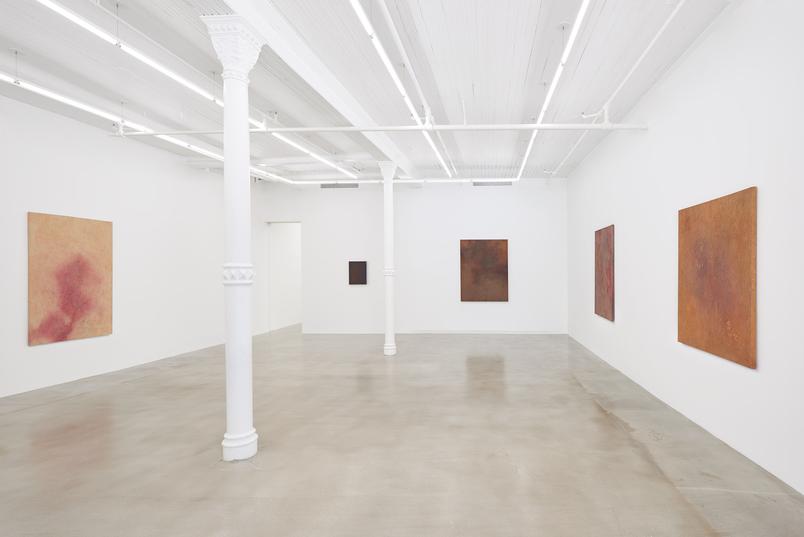Although Kim was thinking of the subject of a bruise more abstractly, these works have accrued additional meaning over the past year. Kim doesn’t consider himself a political artist, but he demands that his paintings, no matter how conventional in format, seek a deep relationship with the times in which he works. Kim notes that trauma is in the air, inescapably seeping into our collective consciousness. Although a bruise is the aftermath of trauma, these works are not simply an elegy to a broken body politic; a bruise is also a signifier of healing. The paintings are handmade through a labor-intensive yet cathartic process that privileges meticulous craft and self-discovered techniques over easy reproduction. Kim begins his process by boiling raw canvas or linen. He then dyes the fabric, often multiple times, with sandalwood, ochre, indigo and other natural elements to alter the color of the fibers. Then he works the surface with natural pigments using rags soaked with hide glue or with oil, eschewing brushes for a more intimate connection with the work. Kim has remarked that a bruise is a “stain below the skin” – a reminder of a past event that requires time to be washed clean. These paintings are an externalization of that reminder, which Kim transforms into art through a purifying devotion to his craft.
Referencing the whole by representing a single part is a recurrent theme in Kim’s oeuvre. He points both to Robert Smithson’s non-sites and the “big picture” emphasis of Daoist philosophy as the impetus behind this sensibility. A touchstone of Kim’s practice is the ongoing painting project, Synecdoche, begun during the 1990s and included in the landmark 1993 Whitney Biennial. Synecdoche is comprised of hundreds of monochrome panels that match the skin tone of each subject. These individual panels are arranged in a grid, acting as a large group portrait, reflective of the multicultural zeitgeist of the early 90s.

